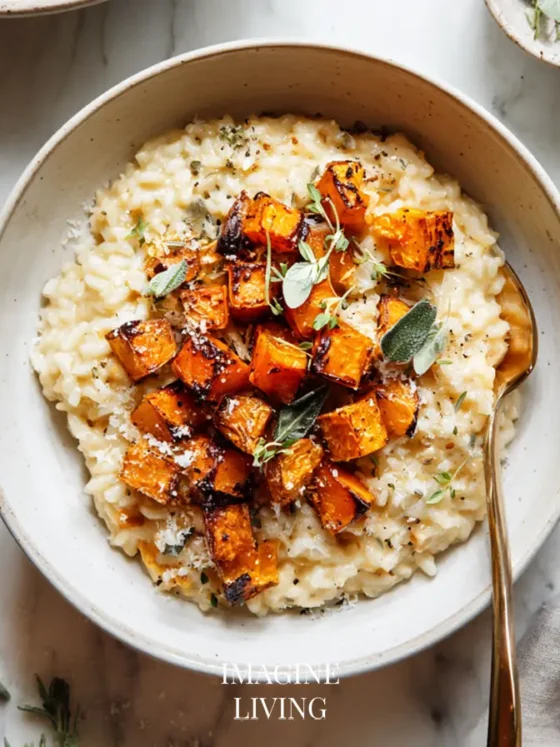Bold Flavors in Every Drizzle: Chimichurri Verde and Rojo
Vibrant, punchy, and irresistibly fresh, chimichurri is more than just a sauce—it’s a celebration of herbs, spice, and tradition. Whether you’re reaching for the zesty green of Chimichurri Verde or the smoky, paprika-laced charm of Chimichurri Rojo, these Argentinian condiments awaken grilled meats, roasted veggies, or even crusty bread with a jolt of color and boldness.
Each version has its own character—verde is bright and herbaceous, while rojo is deeper and sultrier with notes of chili and cumin. Together, they make a stunning duo for any table spread, perfect for summer grilling or elevating a weekday dinner.
“Food is symbolic of love when words are inadequate.” – Alan D. Wolfelt
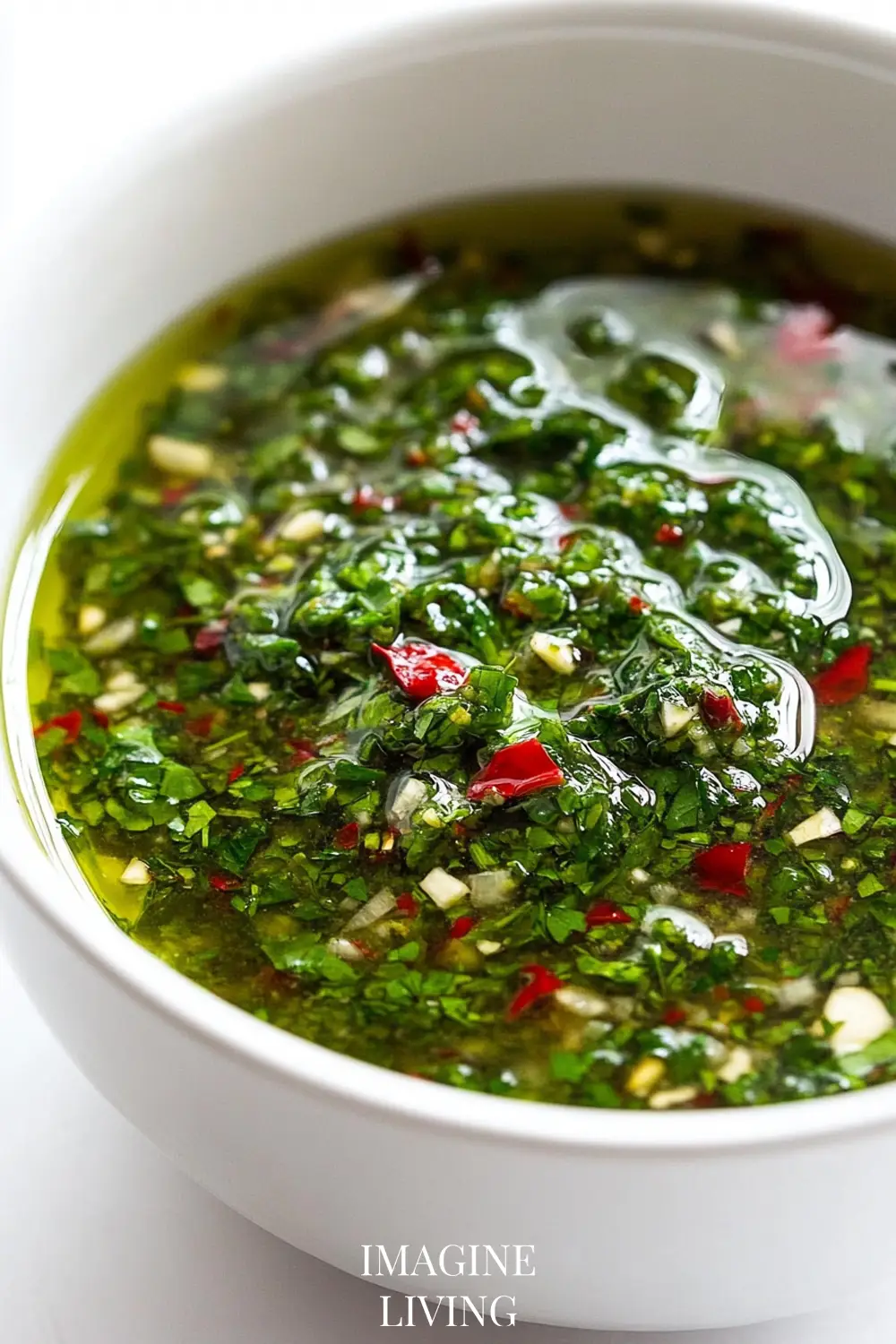
Why You’ll Love This Recipe
- Quick and easy—ready in under 10 minutes
- No cooking required
- Packs a punch of flavor with simple, fresh ingredients
- Pairs beautifully with grilled meats, seafood, veggies, and bread
- Make-ahead friendly and improves with time
- Naturally vegan, gluten-free, and dairy-free
“A drizzle of flavor can change everything.”
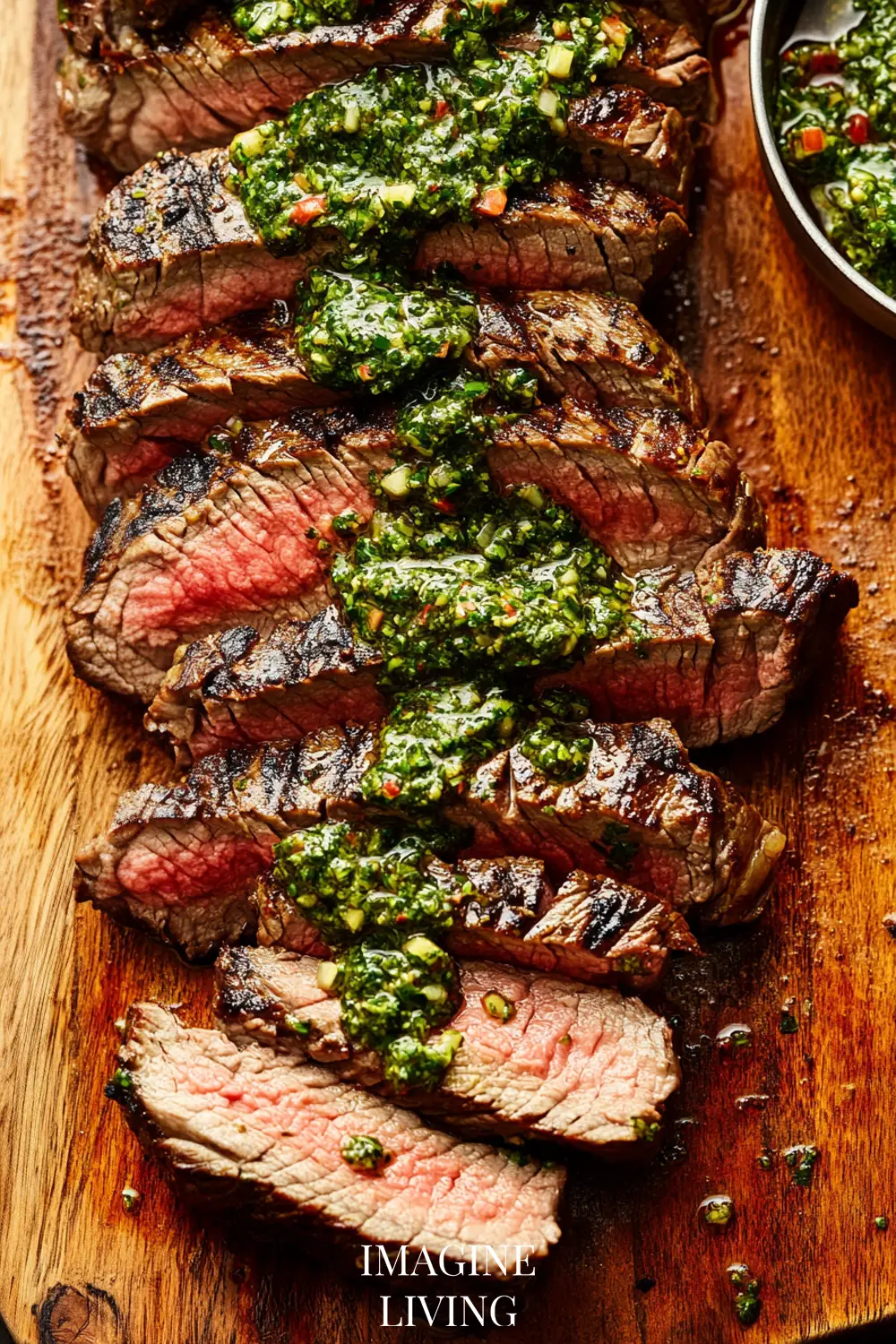
Ingredients: The Flavorful Duo Behind Chimichurri Verde and Rojo
Makes about 1 cup each
For Chimichurri Verde
- 1 cup fresh flat-leaf parsley, finely chopped
- 3 tablespoons fresh oregano, chopped
- 4 cloves garlic, minced
- 1/2 cup olive oil
- 2 tablespoons red wine vinegar
- 1/2 teaspoon red pepper flakes
- Salt and black pepper, to taste
For Chimichurri Rojo
- 1 cup fresh parsley, finely chopped
- 2 tablespoons fresh oregano or 1 tablespoon dried oregano
- 1 tablespoon smoked paprika
- 1 teaspoon ground cumin
- 3 cloves garlic, minced
- 1/4 cup olive oil
- 2 tablespoons red wine vinegar
- 1 teaspoon crushed red chili flakes (adjust to heat preference)
- Salt and black pepper, to taste
Equipment Needed
- Sharp knife or food processor
- Mixing bowls (2)
- Measuring spoons and cups
- Airtight jars or containers for storage
- Spoon or whisk for mixing
Step-by-Step Guide to Perfect Chimichurri Verde and Rojo
Step 1: Prep the Herbs
Finely chop the parsley and oregano for both versions. You can use a food processor for convenience, but avoid pureeing—chimichurri should have texture.
Tip:
Use pulse settings in the food processor to retain a rustic feel. Over-blending will turn it into a paste.
Step 2: Mince the Garlic
Mince the garlic finely for each version to ensure even distribution of flavor.
Tip:
If raw garlic is too sharp for your taste, soak it in vinegar for 5 minutes before mixing.
Step 3: Mix the Verde
In a bowl, combine parsley, oregano, garlic, red pepper flakes, salt, and black pepper. Add vinegar, then drizzle in the olive oil while stirring to emulsify slightly.
Tip:
Let it sit for at least 20 minutes before serving to allow flavors to meld.
“Imagine the tang of vinegar meeting the warmth of garlic and herbs—it’s a quiet explosion of taste in every spoonful.”
Step 4: Mix the Rojo
In a separate bowl, mix parsley, oregano, garlic, smoked paprika, cumin, chili flakes, salt, and pepper. Stir in vinegar, then whisk in the olive oil.
Tip:
Rojo develops even deeper flavor after a few hours—don’t skip the resting time.
Step 5: Adjust and Store
Taste both versions and adjust salt, vinegar, or chili flakes as needed. Store in clean jars and refrigerate. Bring to room temperature before serving.
Tip:
Chimichurri keeps well for 5–7 days and gets better as it rests. Stir before each use.
“Cooking is at once child’s play and adult joy. And cooking done with care is an act of love.” – Craig Claiborne
Time Needed
Whipping up both Chimichurri Verde and Rojo is as efficient as it is rewarding:
- Prep Time: 10 minutes
- Cook Time: None
- Resting Time: 20 minutes (recommended)
- Total Time: 10 minutes (plus resting)

Pro Tips to Perfect Your Chimichurri Game
- Use fresh herbs for the most vibrant flavor—dried herbs can dull the sauce.
- Let it sit—chimichurri improves with time, so make it ahead if you can.
- Use good quality olive oil, since it’s a major flavor component.
- Don’t blend it smooth—chimichurri should be coarse and textured.
- Adjust acidity and spice to your liking—some prefer more vinegar or less heat.
- Chimichurri Rojo pairs especially well with smoked or grilled meats.
- Verde is great on seafood, roasted vegetables, and eggs.
- Keep chimichurri in a glass jar to avoid flavor absorption or staining.
- Add a splash of lemon juice for a citrusy variation.
- Imagine this on toast with avocado or as a marinade—versatility at its best!
Creative Variations: Customize Your Chimichurri Duo
Cilantro Twist
Swap half the parsley with fresh cilantro for a Latin-inspired zing.
Tip:
Great with tacos, grilled shrimp, or drizzled over rice bowls.
Citrus Verde
Add zest from 1 lemon or lime to brighten the verde version.
Tip:
Enhances fish dishes and fresh salads beautifully.
Smoky Rojo Heat
Add a pinch of chipotle powder or use ancho chili flakes instead of red chili.
Tip:
Perfect for BBQ meats or as a smoky dip for crusty bread.
Creamy Chimichurri
Blend with a spoonful of Greek yogurt or sour cream for a rich sauce.
Tip:
Delicious as a sandwich spread or burger topping.
Sweet and Spicy
Add 1/2 teaspoon of honey or agave to balance the heat in Rojo.
Tip:
Ideal for roasted sweet potatoes or grilled pineapple.
Mediterranean-Inspired
Include finely chopped sun-dried tomatoes and olives in either version.
Tip:
Pairs wonderfully with grilled lamb or halloumi.
Nutty Infusion
Stir in 1 tablespoon of crushed toasted almonds or walnuts for crunch.
Tip:
Adds texture and richness, great on grain bowls.
“Let your tastebuds travel even if your feet cannot.”
Serving Suggestions
Here’s how to complete your meal with Chimichurri Verde and Rojo:
- Drizzle over grilled steak, chicken, or pork
- Use as a zesty sauce for roasted vegetables
- Spoon onto fried or poached eggs
- Toss with grilled shrimp or seared fish
- Serve with crusty bread or pita as a dip
Storage and Reheating
- Refrigerate chimichurri in airtight containers for up to 7 days.
- Freeze in ice cube trays, then store in freezer bags for up to 3 months.
- To serve, thaw and let come to room temperature; stir well before using.
- Never microwave—this will dull the flavor. Let it warm gently at room temp.
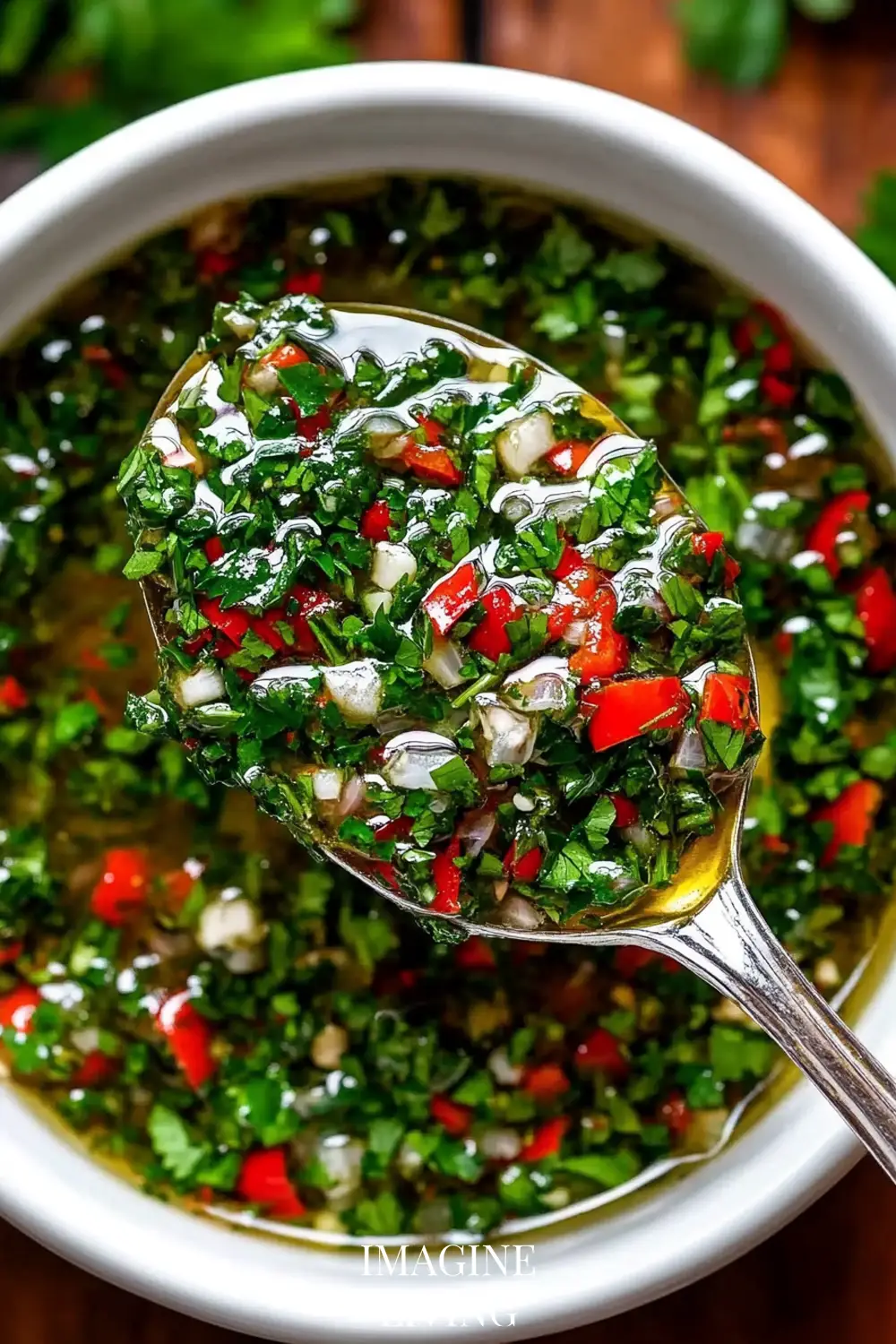
Common Mistakes to Avoid
Over-Blending the Sauce
Chimichurri should be rustic, not a puree.
Tip:
Use a knife or pulse gently in a food processor to maintain texture.
Using Dried Herbs
Dried parsley or oregano will lack the brightness this sauce needs.
Tip:
Always use fresh herbs for full flavor and color.
Skipping the Resting Time
The flavors need time to meld properly.
Tip:
Let the sauce sit at least 20 minutes—or even overnight—for best results.
Using Harsh Garlic
Raw garlic can overpower the sauce if too strong.
Tip:
Soak minced garlic in vinegar for a few minutes to mellow it.
Storing in Reactive Containers
Metal containers can affect flavor over time.
Tip:
Use glass or non-reactive containers to preserve taste.
Not Adjusting to Taste
Every batch of herbs and garlic varies in intensity.
Tip:
Always taste and adjust vinegar, salt, and chili to your preference.
Serving It Cold from the Fridge
Cold olive oil solidifies and mutes the flavor.
Tip:
Bring chimichurri to room temperature before serving.
FAQs
Can I Use a Blender Instead of Chopping?
Yes, but use short pulses to keep it coarse.
Tip:
Avoid a smooth texture—it should be chunky.
How Long Does Chimichurri Last?
Up to 1 week in the fridge or 3 months frozen.
Tip:
Use ice cube trays to portion and freeze easily.
Is Chimichurri Spicy?
It can be, especially the Rojo version.
Tip:
Adjust chili flakes based on your heat preference.
What’s the Best Vinegar to Use?
Red wine vinegar is traditional.
Tip:
You can substitute with white wine vinegar or lemon juice in a pinch.
Can I Use It as a Marinade?
Absolutely—it’s excellent for meats and veggies.
Tip:
Use it to marinate for 30 minutes to 2 hours max.
What Do I Do If It’s Too Oily?
Add a splash more vinegar to balance it.
Tip:
Serve with crusty bread to soak up the richness.
Is It Vegan and Gluten-Free?
Yes, naturally so.
Tip:
It’s also paleo and Whole30-friendly—just check the vinegar brand.
What’s the Difference Between Verde and Rojo?
Verde is herb-based and bright, Rojo is deeper and smoky with spices.
Tip:
Serve them side-by-side for contrast and visual appeal.
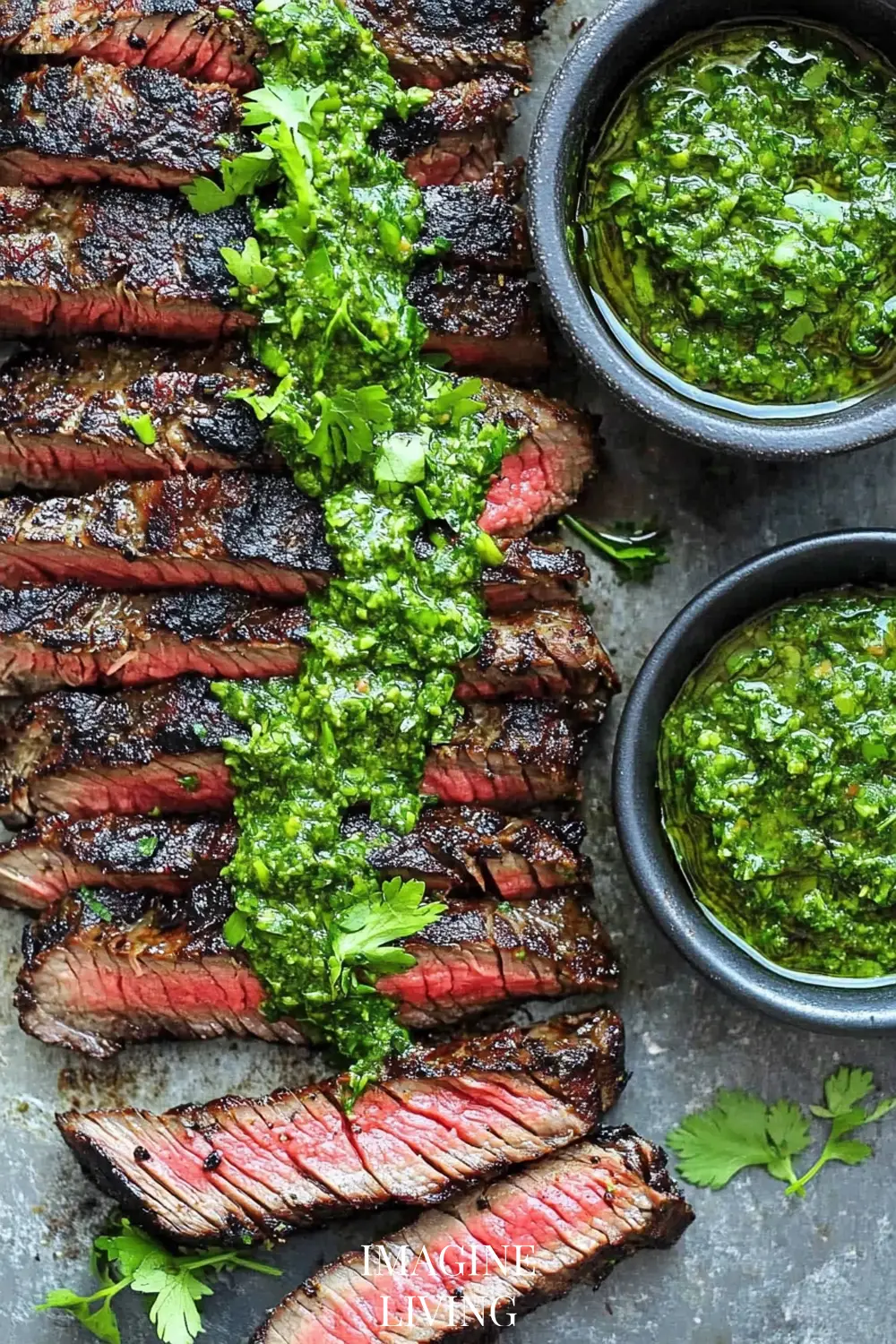
The Bold, Flavorful Finish of Chimichurri
Chimichurri Verde and Rojo bring flavor, color, and life to your table with almost no effort. Whether you spoon them over a sizzling steak, grilled portobello, or simply dip your bread, these sauces deliver something unforgettable in every bite.
“Flavor is the soul of food, and chimichurri sings it out loud.”
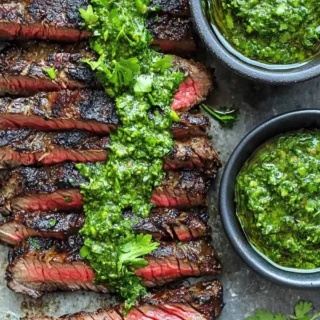
Chimichurri Verde and Chimichurri Rojo
Equipment
- Sharp knife or food processor
- Mixing bowls (2)
- Measuring spoons and cups
- Airtight jars or containers
- Spoon or whisk
Ingredients
Ingredients: Chimichurri Verde
- 1 cup fresh flat-leaf parsley finely chopped
- 3 tablespoons fresh oregano chopped
- 4 cloves garlic minced
- 1/2 cup olive oil
- 2 tablespoons red wine vinegar
- 1/2 teaspoon red pepper flakes
- Salt and black pepper to taste
Ingredients: Chimichurri Rojo
- 1 cup fresh parsley finely chopped
- 2 tablespoons fresh oregano or 1 tablespoon dried oregano
- 1 tablespoon smoked paprika
- 1 teaspoon ground cumin
- 3 cloves garlic minced
- 1/4 cup olive oil
- 2 tablespoons red wine vinegar
- 1 teaspoon crushed red chili flakes adjust to taste
- Salt and black pepper to taste
Instructions
Step 1: Prep the Herbs
- Finely chop the parsley and oregano for both sauces. Use a food processor if preferred, but avoid pureeing.
- Tip: Use pulse settings to retain a rustic texture.
Step 2: Mince the Garlic
- Mince garlic finely and soak in vinegar for 5 minutes if a milder taste is desired.
Step 3: Make Chimichurri Verde
- In a bowl, combine parsley, oregano, garlic, red pepper flakes, salt, and pepper. Stir in vinegar, then slowly add olive oil while mixing.
Step 4: Make Chimichurri Rojo
- In another bowl, mix parsley, oregano, garlic, smoked paprika, cumin, chili flakes, salt, and pepper. Add vinegar, then whisk in olive oil.
Step 5: Rest and Store
- Taste both sauces and adjust as needed. Store in jars and refrigerate. Let sit at room temperature before serving.
- Tip: Flavors deepen after a few hours—ideal for make-ahead.


